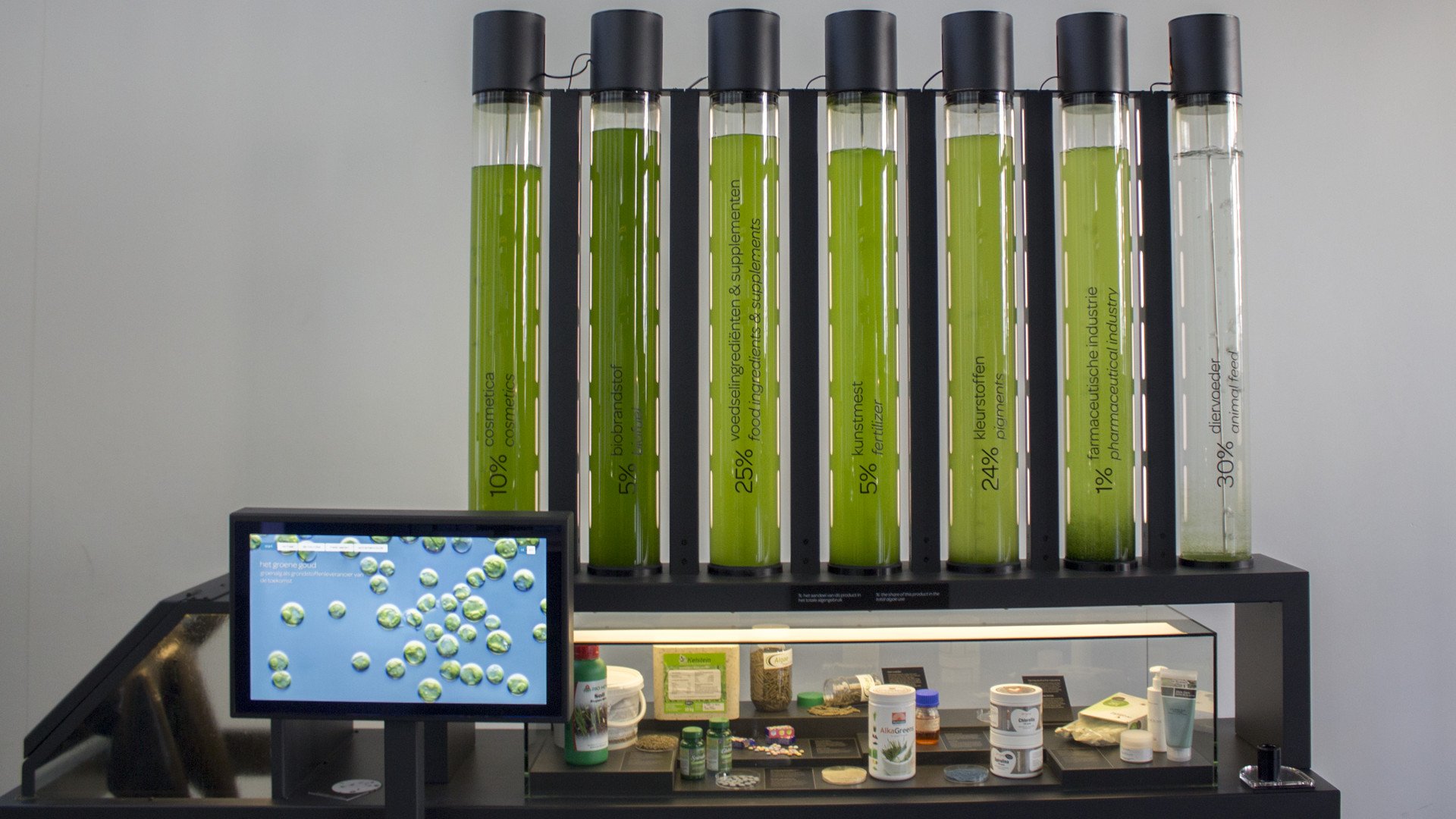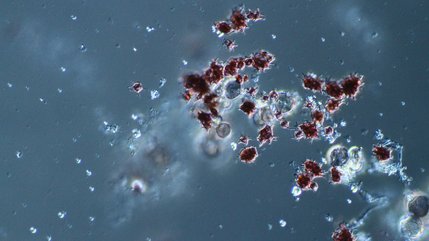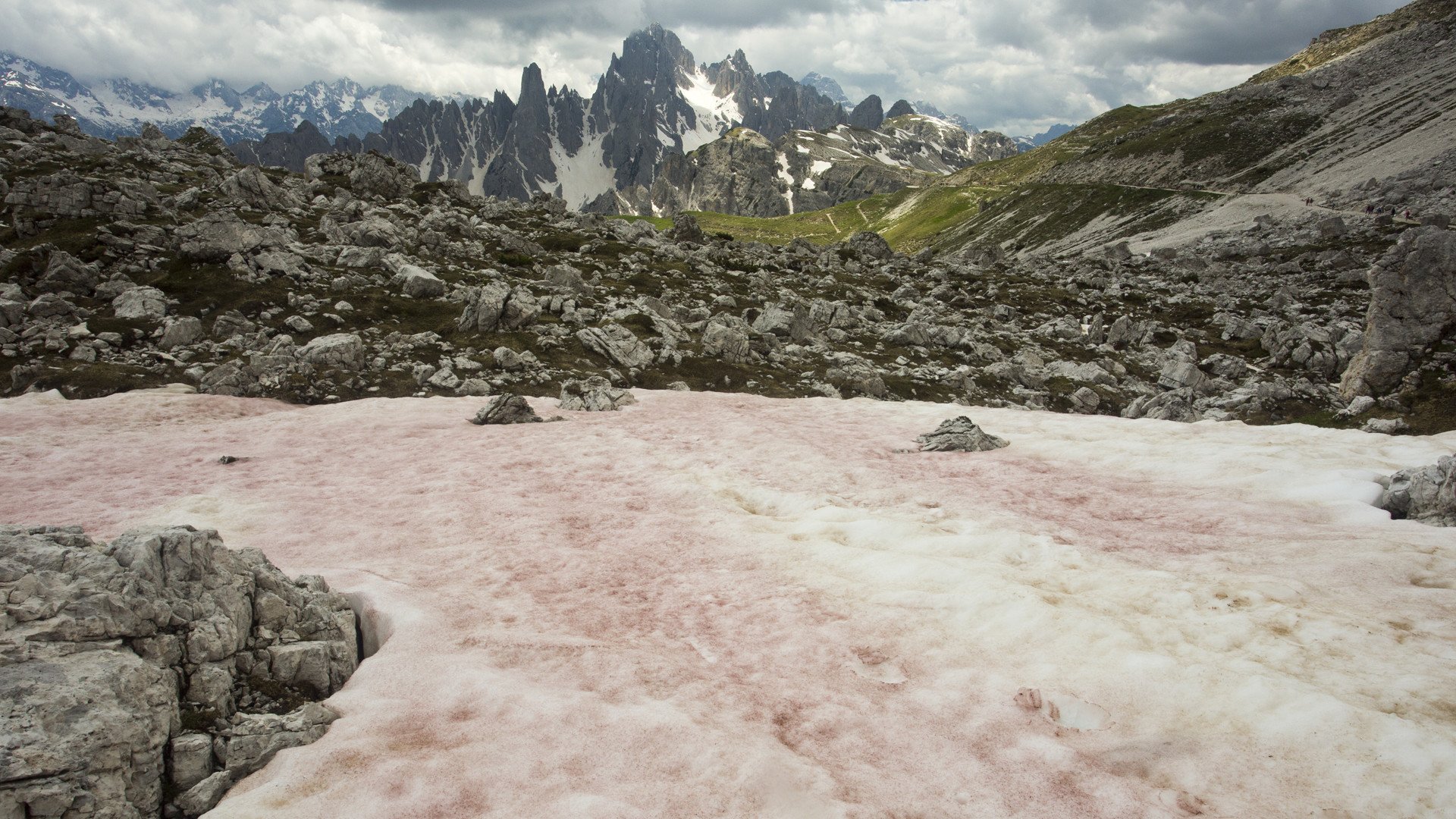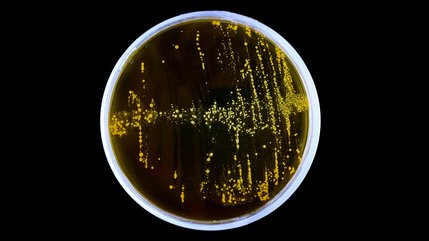
The algae in Micropia also ‘know’ that it’s winter.
Algae and cyanobacteria also 'know' that it's winter. They use sunlight to produce sugars. In the wintertime, they receive less sunlight and therefore grow less quickly. You can also see this in Micropia. Downstairs in the museum are tubes containing Chlorella algae. Those tubes are filled with a slosh of Chlorella and water containing nutrients. Sunlight and the addition of air containing CO2 make the algae reproduce. In summertime, only two or three weeks go by before a dark green tube has to be replaced. The algae will have grown so well that the supply of nutrients will have been exhausted. In wintertime, there is less sunlight and the algae grow a lot less quickly. Now we only have to replace the tubes every six weeks or so.

The spores of the Emericella stella maris look like ice crystals.
Except for one or two days, we have not seen any snow in Amsterdam this winter, which I think is a pity, because I really appreciate ice crystals, despite the cold. Luckily, microbes also know how to form crystals. Emericella stella maris is a fungus with spores that look just like ice crystals! They look very special, don't they? Some microbes are very well adapted to cold. Have you ever seen pink snow? The colour is caused by microbes growing in the snow! People call it watermelon snow and apparently it tastes delicious. But eating it is not a very good idea, because it will give you a bad case of diarrhoea. That doesn't seem like it's worth it. Chlamydomonas nivalis is the name of the responsible algae. This is another alga which can be found at Micropia, although it is green at our temperatures.

The algae Chlamydomonas nivalis is responsible for watermelon snow.
There are also microbes that live at extremely low temperatures, or how about microbes that can withstand extremely salty or acid environments! We call these extremophiles. These microbes can endure environments that we as humans would never survive. They live in places where there are no animals to be found, such as in a volcano. In Micropia, we have a display devoted to these extremophiles, which we call the extremophile theatre. We can also cultivate such extremophiles in the laboratory.

The Lactobacillus casei can survive without oxygen.
One of our volunteers has a lot of experience cultivating anaerobic bacteria, which are a kind of extremophiles. These are bacteria that can live in places where there is no oxygen. We can create an environment without oxygen in special jars to cultivate these bacteria in, such as the Lactobacillus casei, a lactic acid bacterium that lives in your intestines. L. casei lowers the pH with the acids that they produce, and in this way aid the intestines in driving off pathogens by competing with them for nutrients and space. These bacteria are also often found in yogurt or probiotic drinks. Probiotics are microbes that have a positive impact on health if administered in sufficient quantities. Many people take probiotic drinks if they have impaired resistance.
I guess this is just about enough information for now. Hopefully you'll be hearing from me again soon!
Bye for now, Ilja
